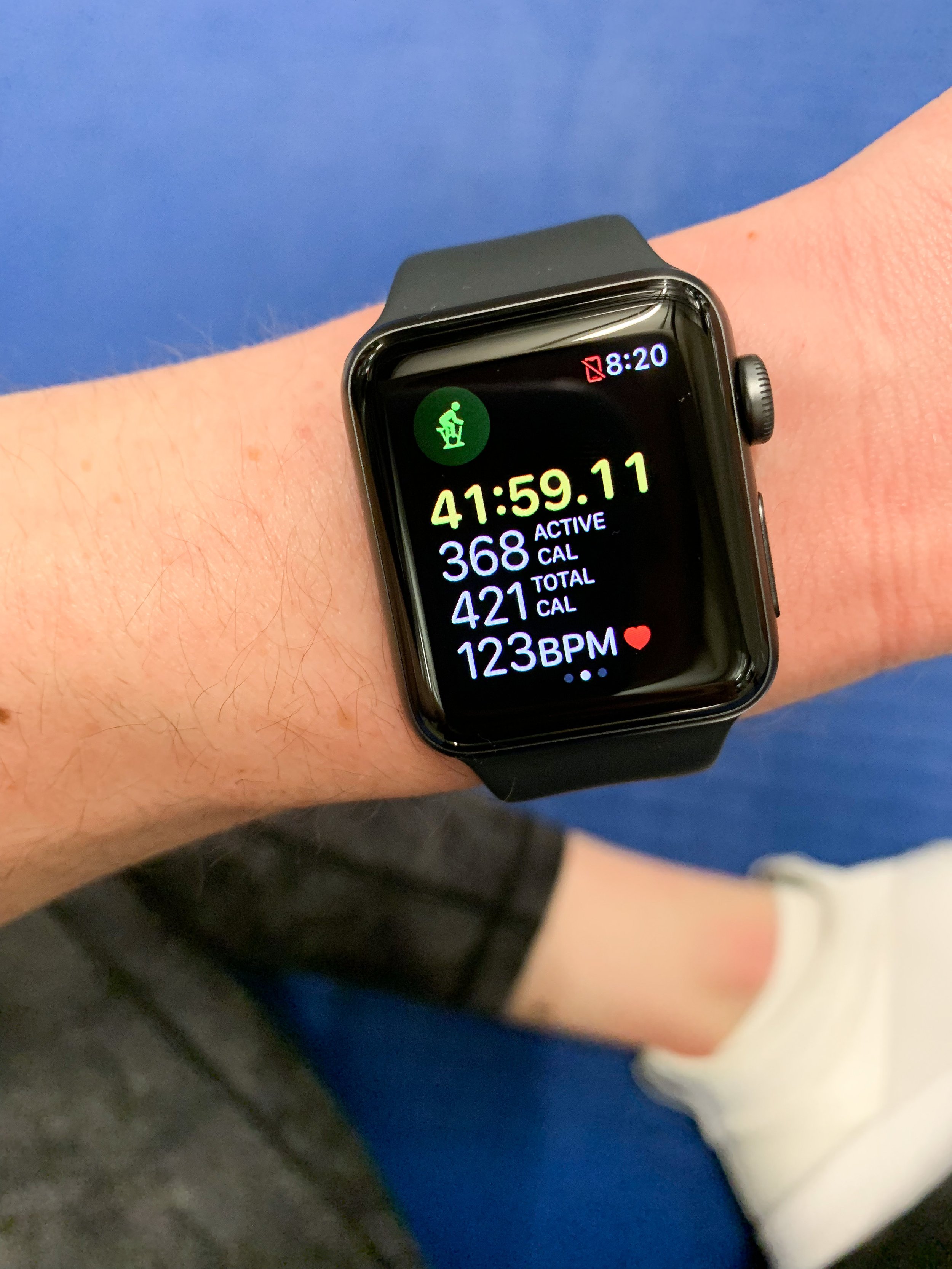If you’ve ever compared the calories you burn during a cardio workout to what you burn during a resistance training workout, you know there is usually a big difference (if you’re performing each workout correctly). But this difference, and the number of calories burned in each workout, does not matter as much as you might think in the big-picture process of achieving your goals - whether to build muscle and strength, or to lose body fat, or something in between.
First, let’s understand these three points:
Let’s say you spend one hour a day five days a week working out - that’s five hours out of 168 each week spent exercising (just 3%). The number of calories you burn during each of those hours makes a very small contribution to the number of calories you burn in the other 165 hours.
Common tracking devices like the FitBit, Apple Watch, and Garmin are not always accurate. They use your age, weight, and height to estimate the metabolic rate, which doesn’t consider important variables like body composition, dieting history, current caloric intake, etc. Then the device estimates the number of calories you burn from each workout based on the calculated metabolic rate + the average heart rate during each workout. These devices are great tools and have advanced over the years, but just like all technology, they aren’t perfect.
Cardio does not require much muscle tissue, while strength training does. Muscle is a very metabolically active tissue - it requires a higher energy input for maintenance. Having more muscle contributes greatly to a faster metabolism, and a faster metabolism contributes to a more lean body composition. If cardio is your predominant form of exercise, your body will begin to use that muscle tissue as an energy supply or simply see it as an unnecessary and energetically expensive tissue to maintain, and it will not allocate energy to maintain the tissue.
On the other hand, if resistance training is your predominant form of exercise, your body receives a loud signal to not only maintain the current muscle tissue, but when done properly, to build more muscle tissue. Over time, adding muscle tissue through resistance training increases the amount of energy required to maintain or continue building, thus increasing the metabolism and improving body composition.
Now that we understand those, let’s talk about how each workout - cardio vs resistance training - impacts the body during and after. Every type of exercise and movement sends a signal to the body. Strength training tells it to build muscle, yoga tells it to increase flexibility, and cardio tells it to boost heart strength, to name a few. Your body must respond to these signals, and adapt to it in order to get better, stronger, more efficient at performing the exercise. I’ve included two photos - one to show the difference in calories burned during a cardio workout and a resistance training workout. Please keep in mind that this is my body and it’s very different from yours - the point is to focus not on the numbers themselves, but rather on the difference between the two relative to the number of minutes spent exercising.
Since we’re talking only about cardio vs resistance training here, we can say that your body’s response to these two forms of exercise greatly impacts the metabolism. Here’s how:
Cardio
Your body burns more calories on average during a cardio workout than it does during a resistance training workout because the heart works harder to pump blood throughout the body and provide oxygen to the working muscles (indicated by an increased heart rate), which they need to produce energy and continue the exercise. When done with the appropriate frequency and intensity cardio sends a signal to the body to strengthen the walls of the heart so that they are more efficient at pumping out blood to the rest of the body. Let’s use marathon runners as an example here: they are well-trained in cardio exercise and will not tire as quickly as the average person because their hearts are stronger and more efficient.
Remember, however, that cardio does not require much muscle tissue, so a marathon runner won’t have a lot of muscle. The body will adapt to high caloric output from frequent cardio exercise by paring down heavy, dense, very metabolically active muscle tissue and therefore reducing the overall metabolic rate.
Of course, a marathon runner is an extreme example, but you get the point here. The more cardio you do, the less muscle tissue you need. The less muscle tissue on your body, the less calories you need to maintain it and the slower your metabolism.
Resistance Training
On the other hand, your body burns fewer calories during a resistance training workout than it does during a cardio workout because the heart doesn’t need to do as much work. However, resistance training sends a very different signal to your body - more muscle is required to continue lifting heavier weights, so the body adapts by building muscle.
Let’s use a sport like powerlifting as an example: these athletes are well-trained in recruiting muscle fibers to pick up a heavy weight and lift it with particular form and control. In order to do this, and to continue lifting heavier and heavier weights, their bodies adapt by adding muscle tissue and more efficiently recruiting muscle fibers, therefore increasing the overall metabolic rate.
Again, powerlifting might be an extreme example, but it paints the correct picture. The more strength training you do, the more muscle tissue you need. The more muscle tissue on your body, the more calories you need to maintain it and the faster your metabolism.
What all of this means…
It does NOT mean that you should perform only cardio or only resistance training, nor is it a “bad” thing to perform mainly one or mainly another. Ideally, you’d find a balance between these forms of exercise and any others you enjoy like walking, yoga, swimming, etc. that makes you happy and helps you feel your best. This information is here to encourage you to focus not on the number of calories burned during your workout because the number is not the most accurate, it’s a small contribution to overall daily and weekly caloric output, and it leaves out important information like the signals these exercise forms send to the body, and how the body adapts to that over time.
Having a strong and powerful heart is very important, and so is having an appropriate amount of muscle mass on the body to support everyday movements, proper posture, bone and joint health, and healthy body composition. And this could easily be a separate blog post, but there are several benefits to exercising other than burning calories or building muscle.
What’s most important is creating an exercise regimen that brings you joy and helps you feel your best, mentally and physically.



